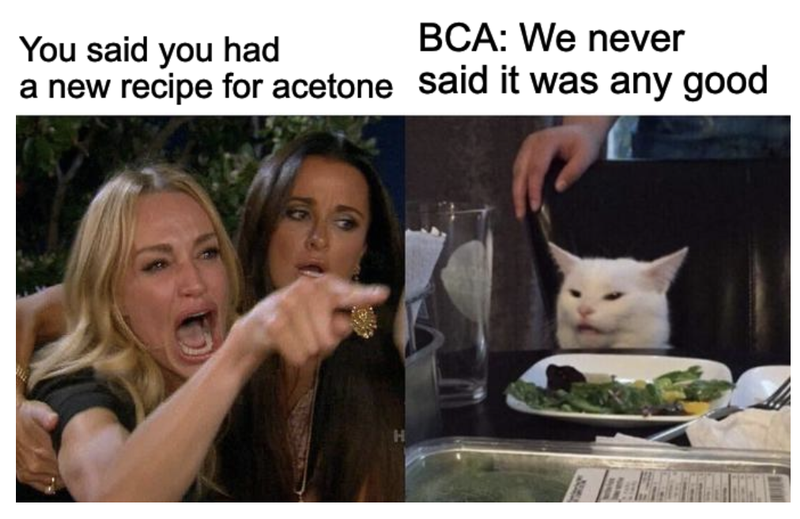The BCA Still Hasn't Fixed Their Acetone Problem

Back in January, we broke a massive story about how the BCA breath alcohol lab didn’t have a formal procedure for making their acetone solutions. This was a major black eye for the BCA. These solutions were supposed to be used as a quality control measure to ensure the DMT breath machine could tell the difference between acetone and ethanol (the alcohol found in a drink) on a person’s breath.
According to the BCA’s own training document, acetone, “may be present in the breath of diabetics, dieters or highly exercised individuals.” It is critical that innocent people not be made into criminals for having acetone on their breath due to a diet, having diabetes, or exercising.
You’d think that a scientific lab would have a procedure to follow when mixing their solutions. Not the BCA. They simply made up their recipes on the fly. Instead of following carefully calculated procedures, they followed recipes handed down by word of mouth!
Heck, even my grandmother bothered to write down her recipes for cookies. The BCA “scientists” didn’t even bother to do that.
Where they are at today
Since January, the BCA has come up with a new procedure for making acetone solutions.
But the new procedure isn’t much better than the last. They are now making acetone solutions with the same calculations used for ethanol! From a scientific point of view, this doesn’t make any sense. Acetone and ethanol are two different substances. They have different chemical structures, densities, boiling points, and partition ratios.
Here’s a direct quote from their new and improved procedure:
“Acetone simulator solutions shall be prepared as listed for a 0.040 ethanol solution calculated using the equation or consulting the chart in Section III.A.2., using acetone as the reagent.” (emphasis added)
Even after we broke the news of their lack of scientific procedures, they still haven’t created an actual scientific recipe for making their solutions. Not only that, but they are testing acetone at much higher levels than they should.
State breath alcohol technicians have told me in court that acetone can add anywhere between 0.005 - 0.020 to a breath alcohol test. So why are they testing it at 0.040? They should be testing at the lower levels. Moreover, they should be testing their solutions with ethanol.
Sure, the DMT breath machine can detect acetone at 0.040 when it is only looking for acetone. But what about when there is a combination of ethanol and acetone? Can the DMT tell the difference? Not likely. The technicians at the BCA have created an absurd scenario to ensure the DMT will pass with flying colors.
We need to ensure that someone who’s had 2-3 drinks and has low levels of acetone (from dieting, having diabetes, or exercising) isn’t pushed over the legal limit by a machine that can’t tell the difference between the two substances.
This isn’t the last you’ve heard on this subject. You can bet that we’ll be bringing up this “new and improved” procedure in court.
Call Ramsay Law
If you’ve been pushed over the legal alcohol limit from a breath alcohol test that can’t tell the difference between ethanol and acetone, call Ramsay Law. We dig deep to understand the science and the law.
Subscribe to our blog to get the latest updates on the situation.

